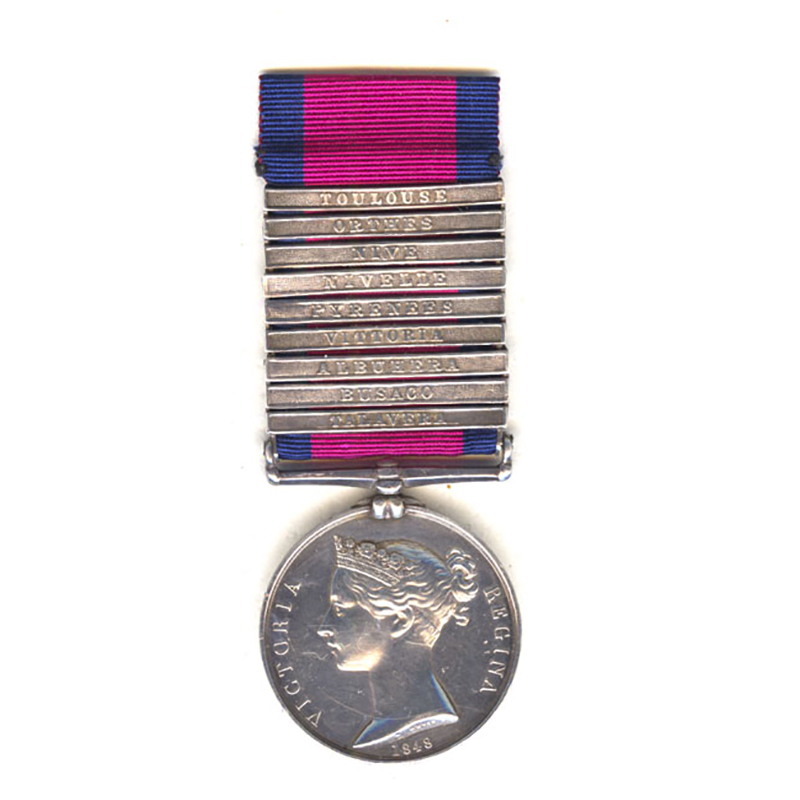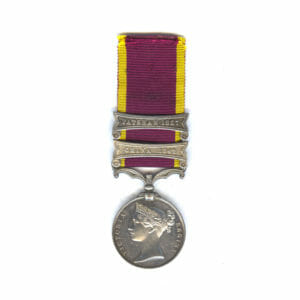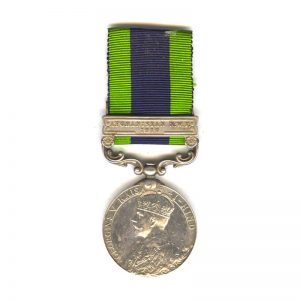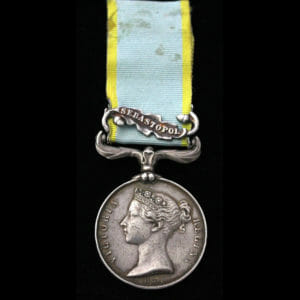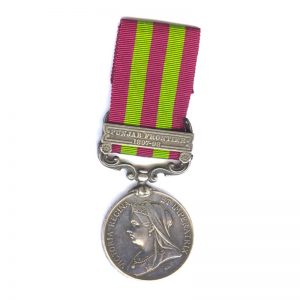Description
Military General Service, 9 bars, Talavera, Busaco, Albuhera, Vittoria, Pyrenees, Nivelle, Nive, Orthes, Toulouse.
Sergeant Richard Morley, 66th Regiment of Foot. Wounded in action twice in Holland with the 9th Foot, earned the maximum entitlement of bars on the MGS to the 66th Foot.
Naming impressed “RICHD MORELEY, 66th FOOT” “SERGT” has been neatly engraved at the beginning of the naming in a matching style to the impressing as his rank of Sergeant was not represent on the medal.
He was born in Hyde, Winchester, Hampshire during 1777, he first enlisted with the 9th foot on 25th December 1789, aged only 12 with the 9th Regiment of Foot.
During his service with the 9th Foot, he became of age and after only 2 years as a private and 3 as a Corporal, promoted to Sergeant.
During 1799 he was sent with the 9th Regiment to the Anglo-Russian Invasion of Holland.
During the battles in Holland he was wounded in action twice, to the Head & Leg.
He re-enlisted with the 66th Foot on 25th September 1804 at the age of 27 proceeded to fight in the Peninsular Wars from 1809-1814, and incredibly survived to earn the maximum amount of bars earned by the 66th Foot.
The 2/66th arrived in the Peninsula in April 1809 – with a strength of some 770 men – and went into action in the following month at the successful crossing of the Douro at Oporto, where the Battalion sustained 38 casualties, which, though a small number, was the highest of all the units involved.
Much harder fighting was experienced at Talavera on 28 July, when 16 men were killed and 99 officers and men wounded, although at Busaco, on the right flank, the 66th saw little fighting, and afterwards withdrew with the rest of the Army into the Lines of Torres Vedras. In 1811, however, the Battalion was in Marshal Beresford’s force laying siege to Badjaoz, the advance of an army under Soult forcing him to abandon this operation and move away to the south to await his adversary’s arrival.
And when the two armies met at Albuhera on 16 May 1811, the 2/66th (24 officers and 417 men), formed part of Colborne’s Brigade, soon destined to suffer the worst catastrophe of the Peninsula War, at least as far as the British Army were concerned. As they were hastily advancing towards the firing line, a tremendous rainstorm broke, making muskets unusable, and this, together with the gunsmoke, concealed the approach of a strong force of French cavalry with a large component of Polish lancers, hitherto unknown in the West. They immediately attacked and with the exception of the 2/31st, who just had time to form square, virtually annihilated Colborne’s men. The 66th lost both their Colours, 16 Officers and 310 men killed or wounded out of 441, a huge loss, as a result of which the survivors were afterwards combined with those of the 31st into the First Provisional Battalion. The 66th could only muster 53 bayonets the next day.
Another document: in a letter about Albuera from Lieutenant George Crompton of the 66th Regiment, dated May 18, 1811 "Oh, what a day that was. The worst of the story I have not related. Our Colours were taken. I told you before that two ensigns were shot under them; two Sergeants suffered the same fate. A Lieutenant seized a musket to defend them, and was shot to the heart; what could be done against cavalry?"
After the conclusion of the Peninsular War, he stayed on and was finally discharged on 25th August 1819, at the time stated as “Very good and useful soldier as a drill Sergeant 24th march 1819”
With copy service papers.
